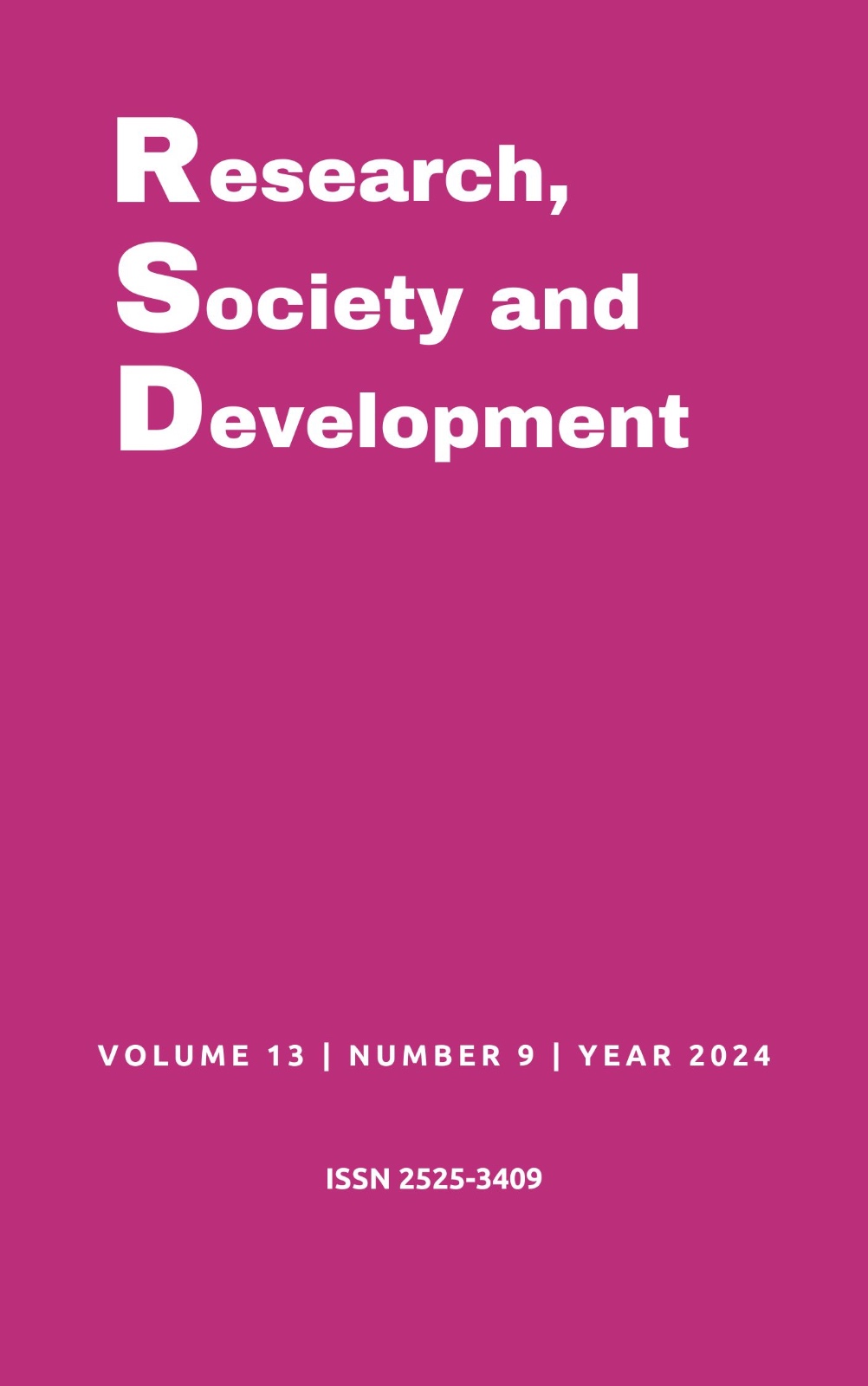Review of clinical cases with biomarkers
DOI:
https://doi.org/10.33448/rsd-v13i9.46669Keywords:
Colitis, Cancer, Examinations, Clinical, Biomarkers.Abstract
The increasing use of biomarkers in different medical specialties has shown promise in personalizing the diagnosis and treatment of several pathologies. Given this relevance, this article proposes to conduct a narrative bibliographic review, with the aim of presenting and discussing clinical cases developed by the authors that exemplify the application of biomarkers in the clinical context. Through the analysis of multiple studies, we seek to synthesize current knowledge, identify gaps and provide a comprehensive view of the role of biomarkers in medical practice. This review is of special interest to health professionals and researchers seeking to deepen their understanding of the subject, contributing to the advancement of knowledge in the area. The keywords were colitis, cancer, exams, clinical and biomarkers. Biomarkers, also known as biological markers, are experimentally measurable indicators that signal the occurrence of a normal or pathological function in an organism or the response to a pharmacological agent. These biomarkers can be of different types, such as physiological (organ functions), physical (characteristic changes in biological structures), histological (tissue samples obtained by biopsy) and anatomical. They can include specific cells, molecules, genes, enzymes or hormones. Among the most relevant in medical research are biochemical markers, which can be obtained relatively easily from body fluids, facilitating the work of researchers. In clinical practice, biomarkers are used for diagnosis, identification of disease risks, patient stratification and assessment of the severity or progression of a condition. In addition, they are useful for predicting prognoses and monitoring treatments, reducing the likelihood of side effects. In some cases, biomarkers also serve as auxiliary tools for regulatory entities to make decisions about drug approval.
References
Adrogué, H. J., & Madias, N. E. (2000). Hyponatremia. The New England Journal of Medicine, 342(21), 1581-1589. https://doi.org/10.1056/NEJM200005253422107
American Cancer Society. (2023). Advanced prostate cancer. https://www.cancer.org/cancer/prostate-cancer/advanced-prostate-cancer.htmlAdrogué, H. J. & Madias, N. E. (2000). Hyponatremia. N Engl J Med. 342 (21): 1581-9.
American Cancer Society. (2023). Family history of cancer: Understanding genetic risk. https://www.cancer.org/cancer/cancer-causes/genetics/family-cancer-syndromes.html
Bartlett, J. G. (2022). Clinical practice. Antibiotic-associated diarrhea. The New England Journal of Medicine, 346(5), 334-339. https://doi.org/10.1056/NEJM200202143460706
Biomarkers Definitions Working Group. (2001). Biomarkers and surrogate endpoints: Preferred definitions and conceptual framework. Clinical Pharmacology & Therapeutics, 69(3), 89-95. https://doi.org/10.1067/mcp.2001.113989
Braunwald, E., Fauci, A. S., Kasper, D. L., Hauser, S. L., Longo, D. L., & Jameson, J. L. (2001). Harrison’s principles of internal medicine (15th ed.). McGraw-Hill.
Cantley, L. C. (2012). Cancer, metabolism, fructose, artificial sweeteners, and going cold turkey on sugar. BMC Biology, 10, 42. https://doi.org/10.1186/1741-7007-10-42
Hulka, B. S. (1991). Cancer epidemiology. Cancer Epidemiology, Biomarkers & Prevention, 1, 13-19. https://courses.washington.edu/epi573/Hulka_1990.pdf
Johnson, C. H., Ivanisevic, J., & Siuzdak, G. (2016). Metabolomics: Beyond biomarkers and towards mechanisms. Nature Reviews Molecular Cell Biology, 17, 451-459. https://doi.org/10.1038/nrm.2016.44
Levey, A. S., Coresh, J., Bolton, K., et al. (2002). Chronic kidney disease: Classification, and risk factors. American Journal of Kidney Diseases, 39(2), S1-S266. https://doi.org/10.1053/ajkd.2002.30101
Lebwohl, M. (n.d.). Creatinine and blood urea nitrogen. Medscape. Retrieved [date you accessed the article], from https://www.medscape.com/viewarticle/570741.
National Cancer Institute. (2023). Fatigue (PDQ®)–Patient version. National Cancer Institute. https://www.cancer.gov/about-cancer/treatment/side-effects/fatigue-pdq
Pereira, A. S., et al. (2018). Metodologia da pesquisa científica [E-book]. Retrieved from [link to the e-book if available]
Roodman, G. D. (2004). Mechanisms of bone metastasis. The New England Journal of Medicine, 350(16), 1655-1664. https://doi.org/10.1056/NEJMra030831
Sawyers, C. L. (2008). The cancer biomarker problem. Nature, 452(7187), 548-552. https://doi.org/10.1038/nature06911
Singer, M., Deutschman, C. S., Seymour, C. W., et al. (2016). The Third International Consensus Definitions for Sepsis and Septic Shock (Sepsis-3). JAMA, 315(8), 801-810. https://doi.org/10.1001/jama.2016.0287
Smith, M. R., Cook, R., Lee, K. A., & Nelson, J. B. (2005). Prostate cancer with bone metastasis. The Journal of Urology, 174(1), 13-20. https://doi.org/10.1097/01.ju.0000164137.21574.61
Palladini, S. R., et al. (2019). Urea and creatinine as predictors of short-term mortality in patients with hip fracture. Osteoporosis International, 30(5), 1011-1017. https://doi.org/10.1007/s00198-018-4855-4
Thomas, L., & Thomas, C. (2002). Biochemical markers and the diagnosis of disease (1st ed.). Springer.
Wintrobe, M. M., & Greer, J. P. (2009). Wintrobe's clinical hematology (12th ed.). Lippincott Williams & Wilkins.
Wintrobe, M. M., & Greer, J. P. (2009). Wintrobe's clinical hematology (12th ed.). Lippincott Williams & Wilkins.
Zhang, A., Sun, H., & Wang, X. (2012). Emerging role and recent applications of metabolomics biomarkers in obesity and cardiovascular diseases. Clinical Lipidology, 7, 425-440. https://doi.org/10.1016/j.cll.2012.09.001
Downloads
Published
Issue
Section
License
Copyright (c) 2024 Patrick Ramos Nunes; João Victor Tosta de Carvalho ; Ariel Estanek França; Lívia Thurler de Mendonça; Andressa Ingrid da Silva de Almeida ; Diogo Moreira Thomaz Pereira; Paulo Felipe Gomes de Sousa; Brendo Campos Seabra ; Vaneza Corrêa de Souza; Agnes Corrêa Gonçalves

This work is licensed under a Creative Commons Attribution 4.0 International License.
Authors who publish with this journal agree to the following terms:
1) Authors retain copyright and grant the journal right of first publication with the work simultaneously licensed under a Creative Commons Attribution License that allows others to share the work with an acknowledgement of the work's authorship and initial publication in this journal.
2) Authors are able to enter into separate, additional contractual arrangements for the non-exclusive distribution of the journal's published version of the work (e.g., post it to an institutional repository or publish it in a book), with an acknowledgement of its initial publication in this journal.
3) Authors are permitted and encouraged to post their work online (e.g., in institutional repositories or on their website) prior to and during the submission process, as it can lead to productive exchanges, as well as earlier and greater citation of published work.


